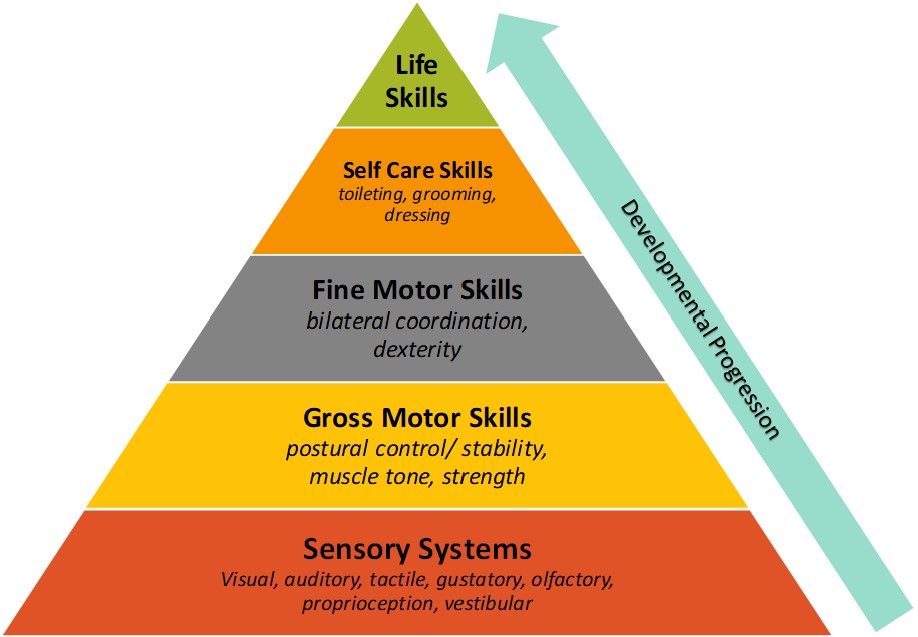Self-Care
Self-care refers to one’s ability to take care of themselves, including skills such as feeding, toileting, hygiene, and dressing.

Some of the strategies we find most effective in teaching children self-care skills include:
Positioning
Low muscle tone, decreased strength, and hypermobility contribute to reduced postural control. For children with Down syndrome, these physical factors make it more difficult to stabilize. Ensuring your child is in a stable position that provides adequate postural stability to carry out the task alleviates the challenge of balancing and reduces fatigue.
Task Analysis
Task analysis refers to breaking down the task into small steps, starting with determining where the child has difficulties and beginning support there. This is where grading the task comes in, or progressively increasing or decreasing the task’s difficulty, duration and/or frequency. Begin with sufficient support, and slowly fade that to increase independence.
Backwards Chaining
Backwards chaining is a teaching strategy that begins with the child completing the last step of a task to cultivate a sense of success. This will provide your child with immediate reinforcement as they have effectively ‘completed’ the task alone. Gradually, you work backwards step by step until they can do each independently.
Social Modeling
Demonstrating how to complete a self-care task can be another useful strategy. Involve siblings, peers and other family members. Start with chatting about a task with your child, followed by modeling. Involve them in fun ways to motivate them (e.g. dressing up their favorite toy).
Visuals and Visual Schedules
Children with Down syndrome are powerful visual learners. Using visual sequences that lay out each step of a task can support learning new skills. They can also be used to incorporate new skills into a daily routine.
Rewards and Reinforcement
Rewards are helpful to engage children in developing new skills. Children with Down syndrome generally lack intrinsic motivation, so providing them with extrinsic motivation or an incentive can be beneficial. Try to choose activity-based rewards, such as time with a preferred toy or game, paired with specific positive praise for a job well done (e.g. “Great, you got dressed by yourself!”)
Environmental Adaptations/Adaptive Equipment
Adapt the environment to suit your child’s needs. Think accessibility! Ensure equipment is set up to facilitate independence and recognize your child’s sensory preferences and the impact they may have on their ability to participate in a self-care task (see Sensory Processing for further information).
At DSRF, occupational therapy can assist with increasing your child’s independence and self-care skills by providing recommendations and strategies based your child’s learning needs and adapting the environment to set them up for success.
DSRF Resources
Dressing Skills: Increasing Independence
Increasing Independence in Self-Care Skills
Other Resources
Potty Time for Kids with Down Syndrome: Lose the Diapers, Not your Patience, by Terry Katz
